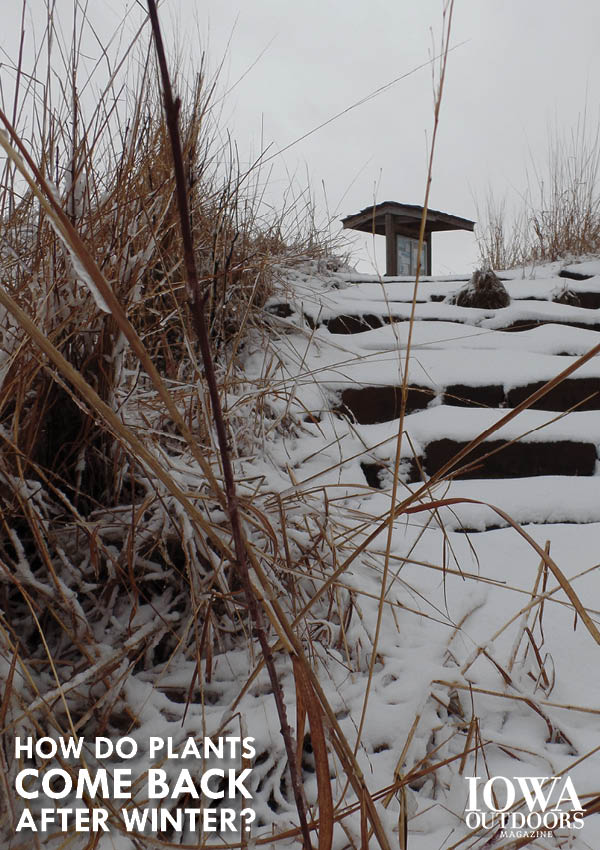From the January/February 2014 issue of Iowa Outdoors magazine
Subscribe now
As the wind grows cooler, leaves drop and snow begins to fall, it’s easy to look at a shriveled, brown plant in the yard and think it’s dead. But that’s just what’s above the surface. Below ground, the plant is still alive, just settled in for a long winter’s nap.
 We call plants that sprout up on their own each spring or summer perennials, meaning that they live for more than two years. During the growing season, the plant stores energy in its roots, bulb or corm (aka rhizome)—the part where the stem and root meet). That energy allows it to go dormant in the winter, much like an animal might hibernate. When conditions like temperature are right the next spring, the plant begins to grow again.
We call plants that sprout up on their own each spring or summer perennials, meaning that they live for more than two years. During the growing season, the plant stores energy in its roots, bulb or corm (aka rhizome)—the part where the stem and root meet). That energy allows it to go dormant in the winter, much like an animal might hibernate. When conditions like temperature are right the next spring, the plant begins to grow again.
Some perennial plants live just a few years, while others can last decades. Think of trees losing their leaves each fall and growing new ones the next spring.
On the Iowa prairie, short-lived perennials like great blue lobelia, gray-headed coneflower and hoary vervain drop a lot of seeds each year to help new plants grow. Plants that live longer, like compass plant, lead plant and prairie dropseed, put out only a small amount of seed.
Perennials, especially prairie plants, are known for their extensive roots that reach deep down into the soil. Those roots, storing energy, help them survive wildfires and drought. Those roots also help keep soil in place, preventing it from eroding away.